Parchment paper, also known as “baking paper,” is the most commonly used product in kitchens and various food industries worldwide. According to FMI, the Parchment paper industry’s worth had surpassed $959 million in recent years.
But you must have questions like: If baking paper safe? Can their chemicals leach into food? Are they heat-resistant or not? And a lot more.
Do not worry! In this article, you will know about the safety of parchment papers and what to look for when buying parchment papers.
- What is Parchment Paper Made of?
- Are Parchment Papers Safe to Use?
- What is Parchment Paper Used for?
- Silicone vs Quilon Coated Parchment Papers
- Bleached vs Unbleached Parchment Paper
- 2 Certificates Needed for Food-grade Parchment Paper
- Where Can You Use Parchment Papers Over Silicone Baking Mats?
- FAQs about Parchment Paper
1. What is Parchment Paper Made of?
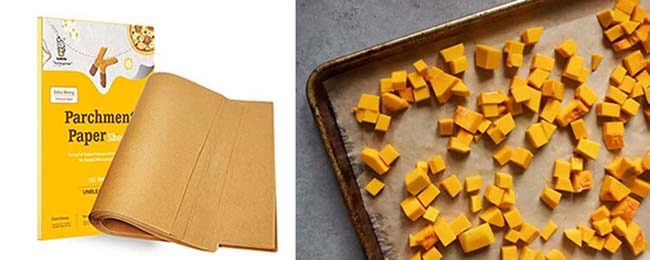
Parchment papers are not simply cellulose-based papers treated with sulfuric acid to increase the density and stability of paper.
This process also gives paper oil and heat-resistant properties. The process is called parchment, so the treated paper is called “Parchment Paper.”
After the parchment process, the parchment paper is coated with some non-sticking agent, mostly silicone, to give it food-grade oil and heat-resistant properties.
2. Are Parchment Papers Safe to Use?
Yes and no. There are many kinds of parchment papers available in the market. Some of them are cheap, coated with toxic chemicals such as Quilon, e.t.c. to make the price more affordable. Some of them are not even coated with any additional non-sticking agent such as silicone to make them safer.
So, it is essential to buy silicone-coated parchment paper instead of Quilon coated. If you buy high-quality parchment papers then, they are entirely safe to use for any purpose. Premium quality Parchment papers have the following safety features;
- Smell-free
- Hypoallergenic
- No chemicals leach or fly off into food if utilized within recommended heats
- Can withstand temperature from up to 428 degrees Fahrenheit ( 220° Celsius)
- Non-toxic as they are coated with silicone which is made of quartz sand, oxygen, carbon, hydrogen, e.t.c, all non-toxic naturally occurring elements
Also, use Unbleached Parchment Papers for heating purposes such as cooking, frying, steaming, roasting, e.t.c because they do not release any chemicals. In contrast, bleached parchment papers can release dioxin and other harmful chemicals if you heat them.
Bleached parchment papers do look good. You can use them for applications where heat is not involved, such as wrapping something, making a cone, e.t.c.
3. What is Parchment Paper Used for?
Parchment papers are one of the basic necessities in the kitchen and many industries. Most of you know that parchment paper can be used as a base during baking to stop sticking to your recipes, but that is not the end. Parchment papers have a lot more uses beyond your imagination.
The famous uses of Parchment papers are given below;
- As a Base
- Wrapping
- Make Cones
- Non-Sticking
- Evenly Cooking
- Separating Food
- Food Industries
- Design Making
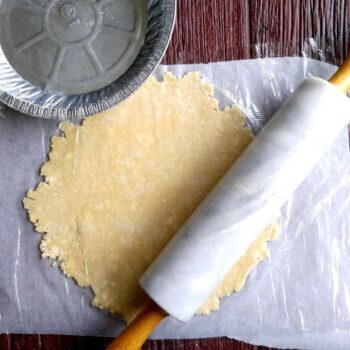
As a Base: You can use parchment paper as a surface over the counter to make a dough and for many more purposes. Parchment paper can save you from hours of cleaning and make your kitchen look well.
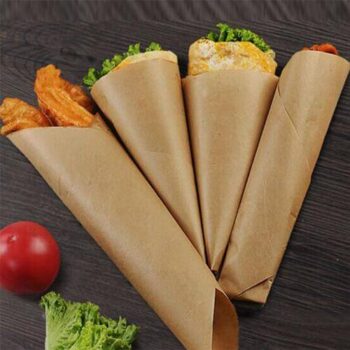
Wrapping: You can use parchment paper to wrap all kinds of rolls, such as sushi rolls, zinger rolls, e.t.c. to hold all the ingredients during cooking as well as eating.
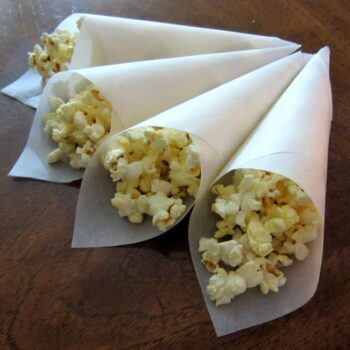
Make Cones: Use parchment paper to make cones for holding snacks, candies, e.t.c for kids and adults. Cones help distribute snacks among kids as well as give a party feels at home.

Non-Sticking: Nothing is messier than seeing your food stick to the heating dish during cooking. Parchment paper is non-stick to the bottom, and you can easily transfer them in excellent shape to another container.
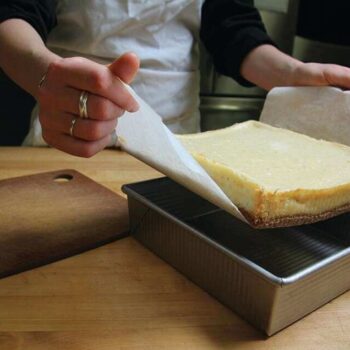
Evenly Cooking: Some baking dishes are not evenly heated. There are maybe some cool spots, and some are too hot spots. But the air layer between parchment paper and heating dish ensures even heating without any burned bottoms.
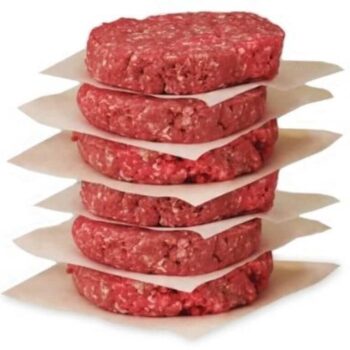
Separating Food: Use the parchment paper to place cookies, snacks, cakes, candies, sandwiches, e.t.c in a lunch box or the refrigerator to avoid merging one food into another.
Food Industries: Parchment paper is also used in many industries to pack food products, such as packing butter, pancakes, e.t.c.
Design Making: You can cut the parchment paper into a specific design, place it on the cake, and cut out the extra parts precisely. You can also make a special-looking pizza with it and a lot more.
4. Silicone vs Quilon Coated Parchment Papers
There are many key differences between Silicone and Quilon parchment papers. You can see the chart below to decide for yourself which is better:
| Silicone Parchment Paper | Quilon Parchment Paper |
|---|---|
| Made of Quartz sand, Hydrogen, Oxygen, Carbon, etc. | Contain Heavy Metal Chromium |
| Non-toxic | Toxic when incinerated |
| More costly | Less costly |
| More Oil resistant | Less Oil Resistant |
| More heat resistant | Less heat resistant |
| Some can be reused up to 10 times | Only Once |
So, Silicone-coated Parchment Papers may be a little costly than Quilon-coated Parchment Papers, but they are far better in the end when considering reusability and safety concerns.
5. Bleached vs Unbleached Parchment Paper
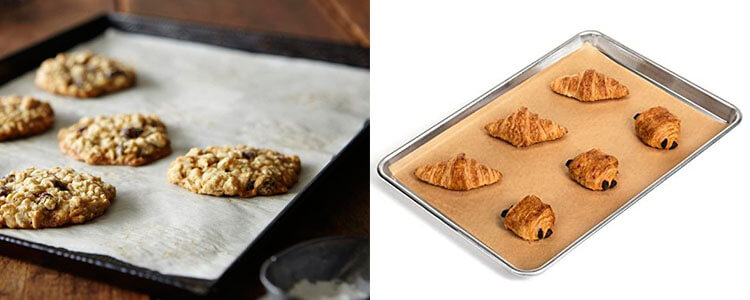
There are two basic kinds of parchment papers both are coated with either Silicone or Quilon or other coatings;
- Bleached Parchment paper
- Unbleached Parchment Paper
Bleached parchment paper is mostly treated with chlorine to make it white, while unbleached parchment paper is not treated with chlorine, so its color is brown.
Bleached parchment paper may release a chemical called dioxin. According to WHO, dioxin may cause many health problems such as reproductive, immune, hormonal, developmental, and cancer.
While unbleached parchment paper contains fewer chemicals and is dioxin-free, so, in a nutshell, it is best to use unbleached parchment paper rather than bleached parchment paper.
6. 2 Certificates Needed for Food-grade Parchment Paper

There are many kinds of certificates that you can look for when buying the best quality parchment papers. The most internationally accepted certifications are FDA and LFGB.
Some manufacturers provide only FDA, or LFGB approved silicone, while the paper is regular, while others offer separate certificates for both silicone coating and paper.
LFGB certificates have higher testing criteria than FDA certificates. Also, LFGB standard parchment paper may be a little more expensive.
So, it is best to buy at least FDA-approved parchment paper, if not LFGB, to ensure your and your family’s safety.
7. Where Can You Use Parchment Papers Over Silicone Baking Mats?
Both Parchment paper and Silicone Baking Mats save your cooking from over-burning and messy sticking at the bottom.
Silicone baking mats can be used for over 3000 oven cycles, while even premium quality parchment papers can be used only 10 times. Still, silicone baking mats are way more costly than parchment papers.
Each of them has pros and cons. You can check my previous article to know if silicone baking mats are safe. You can also learn about the comparison of the 2 items. Sometimes parchment papers are more useful than silicone baking mats.
Some of the places where you can use parchment paper over silicone baking mats are given below;
- Use parchment paper as a disposable base over your counter, keeping your kitchen neat and clean.
- When there is much cooking, you can use many parchment papers at once rather than using only one available silicone baking mat.
- Silicone baking mats can not be cut down, while parchment papers can be cut down into any desired shape, fitting any unusual size pan.
- Parchment papers come in handy when wrapping rolls to avoid falling off inner ingredients, while silicone baking mats can not be used as wrappers.
8. FAQs
Does parchment paper have chemicals?
Yes and no. Unbleached silicone-based parchment papers are chemical-free so are safe to eat.
Bleached parchment paper has a harmful chemical called dioxin which may cause many reproductive and developmental diseases.
Quilon-coated parchment papers contain heavy metal chromium, which is very dangerous and may cause many cardiovascular-related disorders.
Avoid both bleached and Quilon-coated parchment papers for chemical-free cooking.
Does parchment paper have BPA?
BPA is an industrially used chemical for the manufacturing of different products. BPA may cause many cardiovascular problems such as hypertension, angina, heart attack, coronary artery disease, e.t.c.
But rest assured, silicone-coated parchment papers do not contain bisphenol A ( BPA ).
Is parchment paper biodegradable?
Yes, parchment papers are absolutely biodegradable.
Although parchment papers are not recycled, they are fully decomposable. Bacteria will start eating them as soon as they get into the soil.
Unbleached silicone-based parchment papers are more environmentally friendly during manufacturing as well as they do not release any harmful chemicals into food.
Parchment papers are less harmful than foils, wax papers, e.t.c.
Is parchment paper the same as wax paper?
No, parchment paper and wax paper are entirely different.
Parchment paper is silicone coated and heat resistant, while wax papers are paraffin wax coated and are not heat resistant.
You can not use wax papers at high temperatures. They will release harmful chemicals and will catch fire.
Parchment papers and wax papers are both water-resistant and oil-resistant.
Wax papers are cheaper than parchment papers. Each has its own uses.
Is parchment paper healthier than aluminum foil?
Aluminum foil can release chemicals into the food at high temperatures, while unbleached silicone-based parchment paper does not.
Aluminum foil has no non-stick properties, while parchment paper can save your food from sticking.
If the food is cooked wrapped in aluminum foil, then the food will be soft, while parchment paper allows airflow and makes food crispy.
So, it is safe to use parchment paper instead of aluminum foil for cooking purposes.
Can you boil parchment paper?
Yes, parchment paper is entirely water-resistant even when water is boiling.
It is best to use unbleached silicone-based parchment papers because they do not give off any smell, absorb oil, or leach any chemicals into the food even at high temperature and moisture values.
Can you fry on parchment paper?
Yes, you can fry anything on silicone-coated parchment paper because they can withstand temperatures up to 428 degrees Fahrenheit ( 220° Celcius).
Just put parchment paper on a frying pan, put the eggs or anything you want to fry on parchment paper, and voila, you will get excellent frying results. Also, use unbleached parchment papers for chemicals free food.
Does parchment paper need to be greased?
No, you do not need to grease parchment papers in worry of sticking food to the bottom.
Cookies, cakes, pizzas, rolls, e.t.c. will not stick to the parchment paper and will slide over easily, even without any kind of oil, butter, or fat greasings.
Can you reuse parchment paper?
Yes and no. Some parchment papers can be used only once, while others can be used up to 10 times.
Unbleached silicone parchment papers can be reused again because they do not leach off any chemicals and are more stable than bleached or Quilon-coated parchment papers in every way.
Does parchment paper catch on fire?
No, silicone-based parchment paper does not catch fire as long as you use it within recommended temperature ranges(≤428°F). Thus, parchment paper is oven safe.
The End
If you think this article is helpful for you, share it with your friends or on Facebook, Reddit, Quora. If you have other questions, please leave messages so that I can help you.
We’re Jingsourcing, a leading sourcing agent in China. If you want to wholesale safe parchment paper, please feel free to CONTACT US.

Wonderful article! We will be linking to this particularly great post on our website.
Keep up the great writing.
A fascinating discussion is worth comment.
There’s no doubt that that you need to write more about
this topic, it might not be a taboo subject but generally folks don’t
speak about these topics. To the next! Kind regards!!